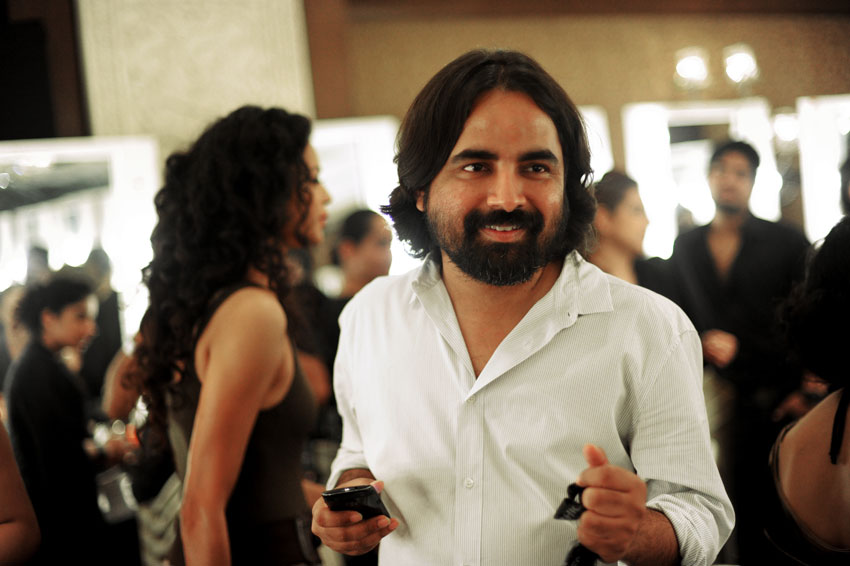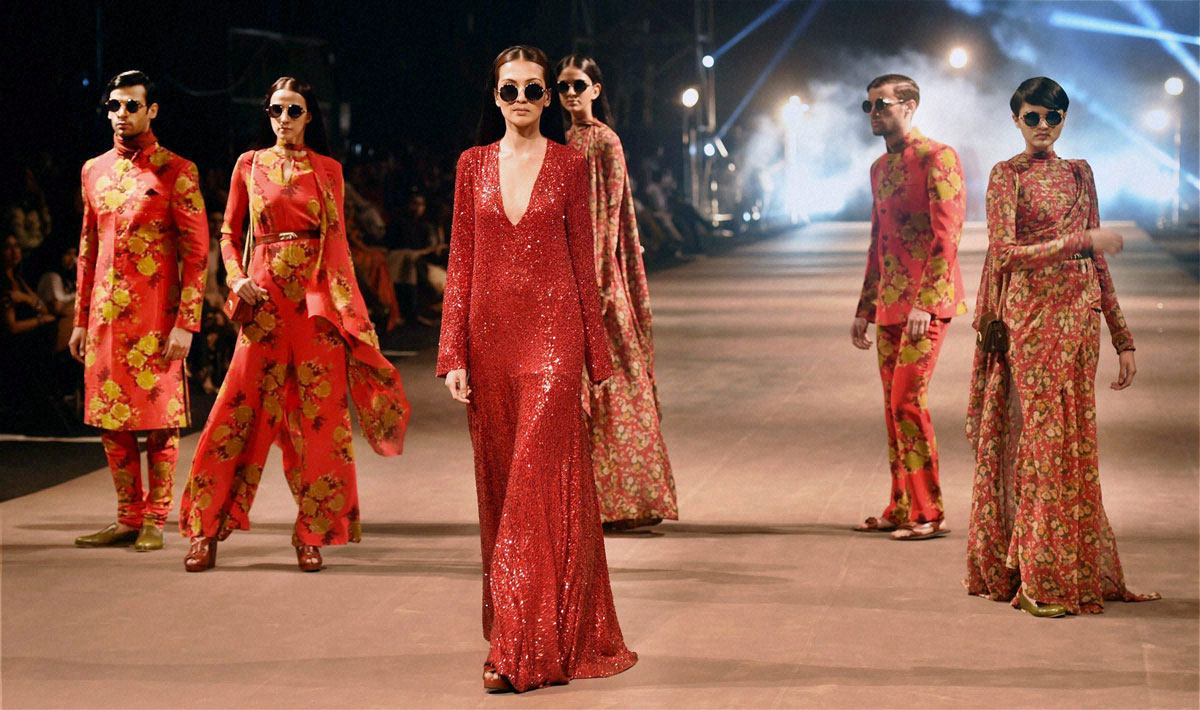I DON’T FOLLOW TRENDS, SAYS SABYASACHI
Models display creation of designer Sabyasachi Mukherjee during the Lakmé Fashion Week Summer/Resort 2015 in Mumbai, early 2015. (Santosh Hirlekar | PTI)
He uses exotic fusion of styles, patchwork and splendid embellishments, but noted fashion designer Sabyasachi Mukherjee says he never follows latest fashion trends in his designs. – @Siliconeer #Siliconeer #Lifestyle #Sabyasachi #sabyasachimukherjee #IndiaFashion #Sari
The 42-year-old designer believes that old is gold and staying true to his roots always works for him because that is something which will never be outdated.
“I don’t know about other people following trends, I don’t follow trends at all. I like to do classic Indian wedding clothes and red and gold is going to be forever on trend for me,” Sabyasachi told PTI.
The designer, who pioneered the use of Indian textiles in a modern context, says today’s bride likes traditional and hand-embroidered clothes as she wants to look like an Indian bride.
“Modern bride, right now, is looking for clothing that has a touch of culture because the global identity has become so confused that everybody is returning back to their roots.”

Sabyasachi, who showcased his couture line “Firdaus” at the recently concluded Vogue Wedding Show 2016 here for this year’s wedding season, says his collection was inspired by Persia, Iran, Afghanistan and Kashmir.
The clothes have fine quality needle work done with “zardozi” and “tilla.”
“Tilla is the work that is used in Kashmir and it is a technique which is labor-intensive but it’s very subtle and beautiful.”
Asked about his passion for antique textiles, the couturier says, “Well, I have always championed it. It’s not something new for me, I have been doing it for last 15 years.
They are still the most beautiful textiles in the country and in the world.
“I like to do a lot of hand-woven fabrics for the brandware market. A lot of people are leaning towards thread work and traditional work. These hand-woven fabrics can be super light if you make it in ‘chanderi’ and ‘khadi.’”


